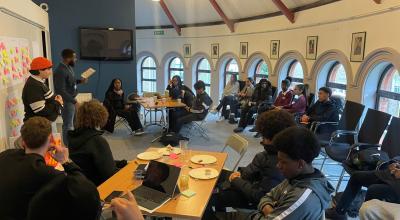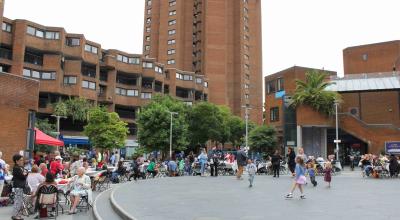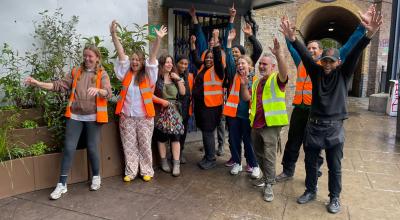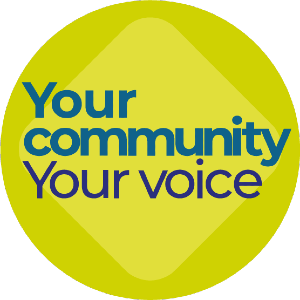Co-design in action in Kensington and Chelsea
Co-design is an excellent way of working collaboratively with our communities. It gives residents the space to actively shape and improve local services, fostering a sense of ownership and involvement.
What is co-design
Co-design is where people who use services are involved in designing services or ‘products’, based on their experiences and ideas. They have genuine influence but have not been involved in ‘seeing it through’ means co-designing stops once products (e.g policies, training materials, information booklets, events, service specifications) or services have been co-designed. It’s a finite process.
(Definition from Think Local, Act Personal)
We have been working together with residents to co-design a number of projects across the borough. You can read about some of those projects on this page.
Grenfell Projects Fund
The Grenfell Projects Fund supports community-led recovery in North Kensington, with £600k available for successful projects in 2024/2025. Since 2019, the fund has supported 100 environmental, cultural, and community-led employment programmes.
Uniquely, the 2024/2025 fund was co-designed with a Resident Panel of seven North Kensington residents. This panel worked closely with Council officers to shape grant themes, design the application and scoring process, assess applications, and review communications.
Their involvement ensured that residents' lived experience was central to the process.
Youth Safe Zone at Notting Hill Carnival
The Youth Safe Zone provided a safe space for 67 children, young people, and vulnerable adults during the 2024 Notting Hill Carnival. Staff feedback emphasised the positive impact of the co-design process, which ensured the space effectively met the needs of young people, like having youth professionals to provide non-judgemental support to young people who were lost, intoxicated or anxious at Carnival, and TfL chaperones for safe travel home. The priorities of those the space was intended to serve steered its planning.

World's End Estate
The World’s End Project aimed to make a range of targeted services, advice and support more accessible to residents on and around the World’s End Estate. Residents co-designed the engagement plan, with 23 participating in co-design sessions and over 190 providing feedback. This resulted in an engagement report, which has informed a plan to bring additional services to the estate, as well as highlighting a range of existing services that support residents’ needs. The Council valued resident input, highlighting the importance of co-design.

Future Neighbourhoods 2030
The Future Neighbourhoods programme in Notting Dale used community co-design to create a greener, fairer, and more climate-resilient neighbourhood by 2030. Community engagement shaped priorities and solutions through:
- a community steering group
- surveys
- roadshows
- community events and workshops
Over 50 environmental initiatives have been and/or are in the process of being co-designed, planned, and implemented with residents and more than 30 local partners. This approach builds trust and empowers the community, which is particularly important for the council post-Grenfell. The programme demonstrates that a community-led approach creates more impactful and sustainable outcomes for residents.


Last updated: 4 April 2025
